How to propagate lilacs – expert advice to get new plants from cuttings, suckers, and seed
You can propagate more lilacs for your backyard from cuttings in just a few simple steps

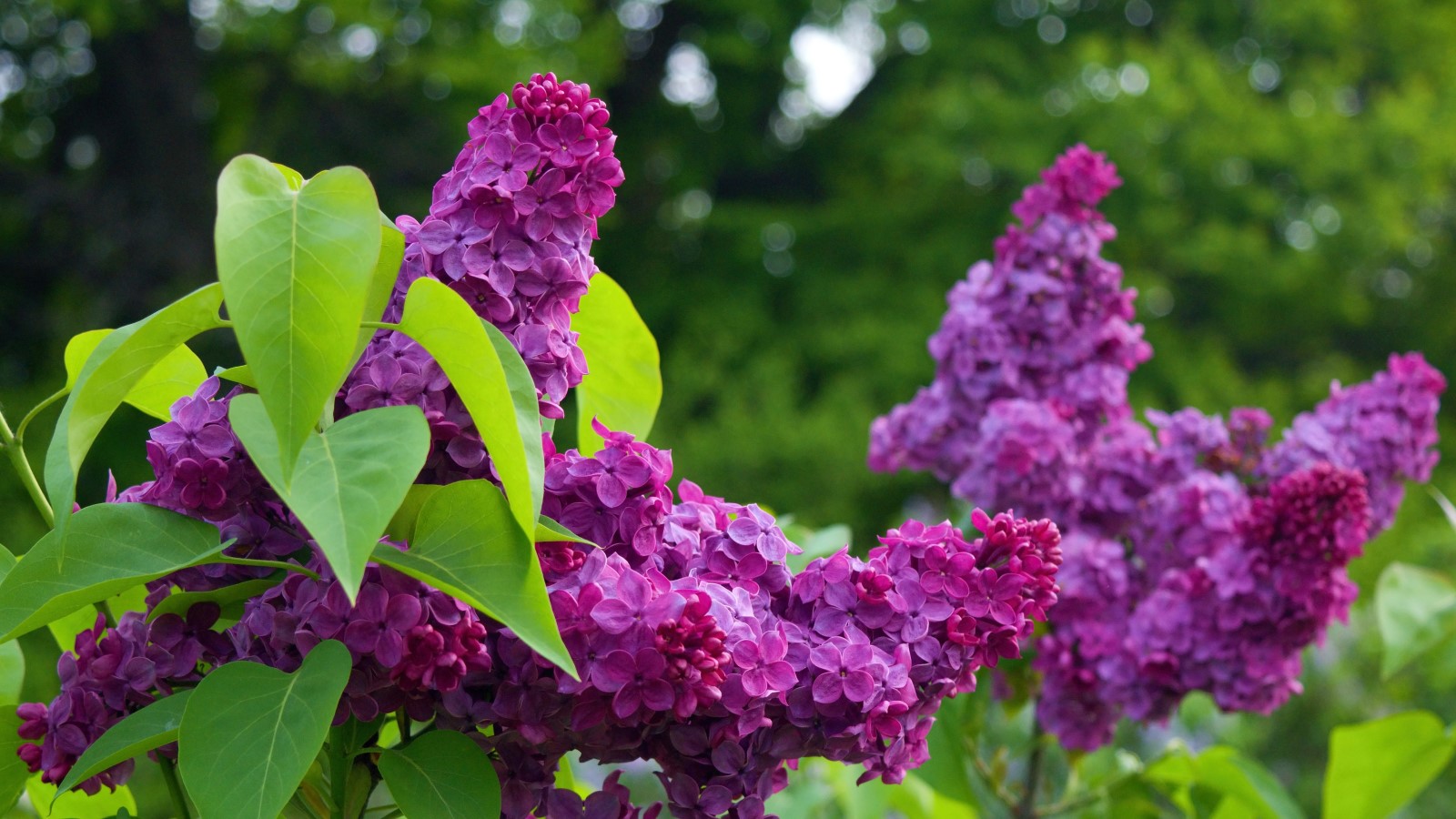
Lilacs are popular backyard shrubs renowned for their sweet blooms and can be propagated in various ways. It's possible to grow them from cuttings, from suckers, or from seed.
One of the reasons lilacs are popular is their versatility, suitable as large specimens or for small yards or containers thanks to modern compact varieties. If you want to know the best methods for how to propagate lilacs to add more to your yard, then cuttings or suckers offer the most viable solutions. This is because growing lilacs from seed is more risky and plants will take up to five years to bloom.
Knowing how to prune lilac means you can keep these choice shrubs under control and also propagate more, as the good news is the ideal time to propagate from cuttings coincides with when to prune.
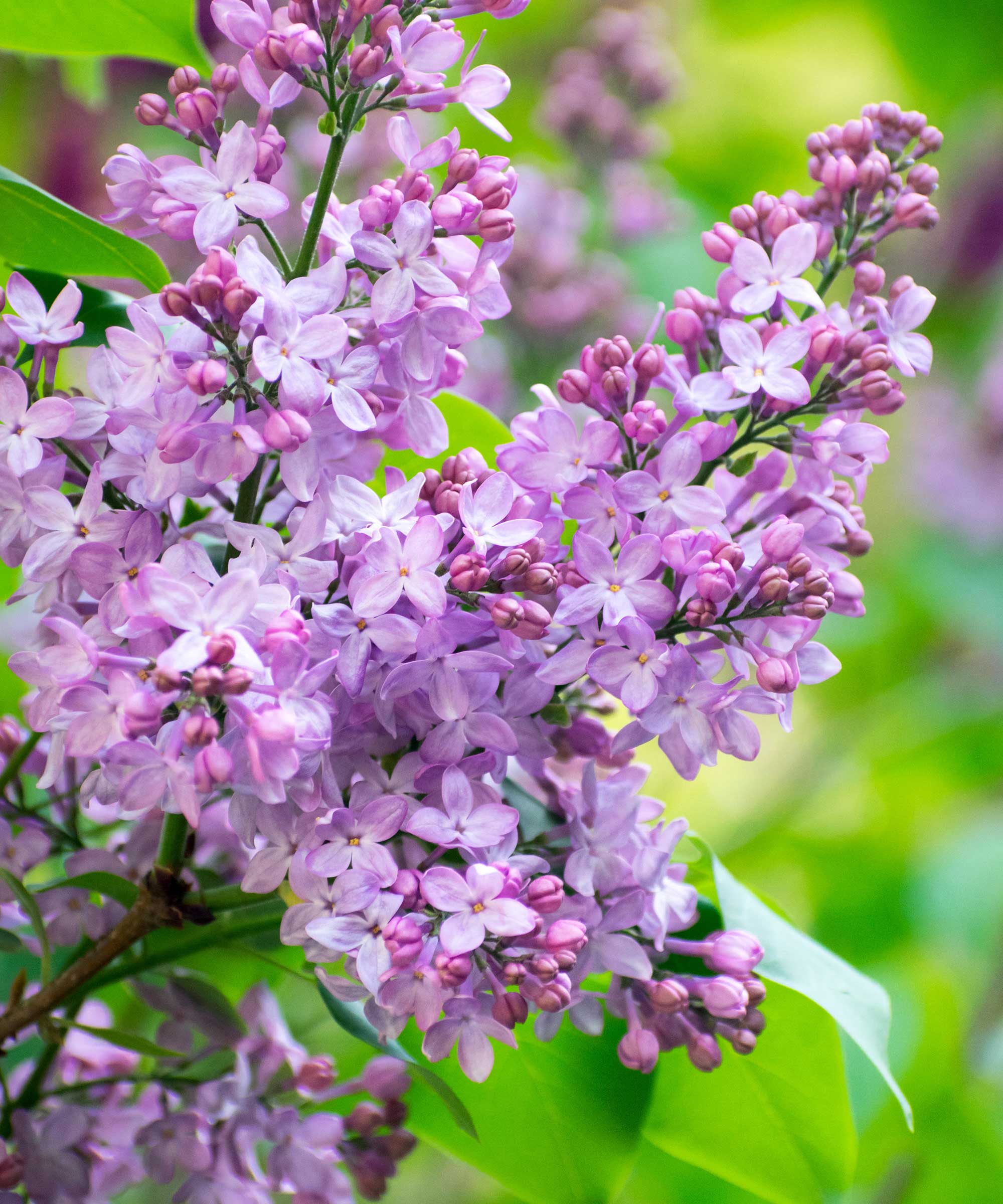
Lilacs like growing in a lot of sun, with at least six hours of direct light a day
When to propagate lilac
Lilacs can be propagated effectively from softwood cuttings in the spring and early summer. Getting the timing right is important, as taking cuttings at the wrong time of year is a common plant cutting mistake.
You want to take cuttings when the plants are actively growing, otherwise they won’t root as you want. Lilac propagation can also be done by growing new plants from suckers. This can be a quicker way to grow new lilacs and, like cuttings, is ideally done in the spring.
If you've already planned when to prune your lilacs, taking cuttings can be done at the same time. This tends to be soon after they finish blooming in late spring and early summer.
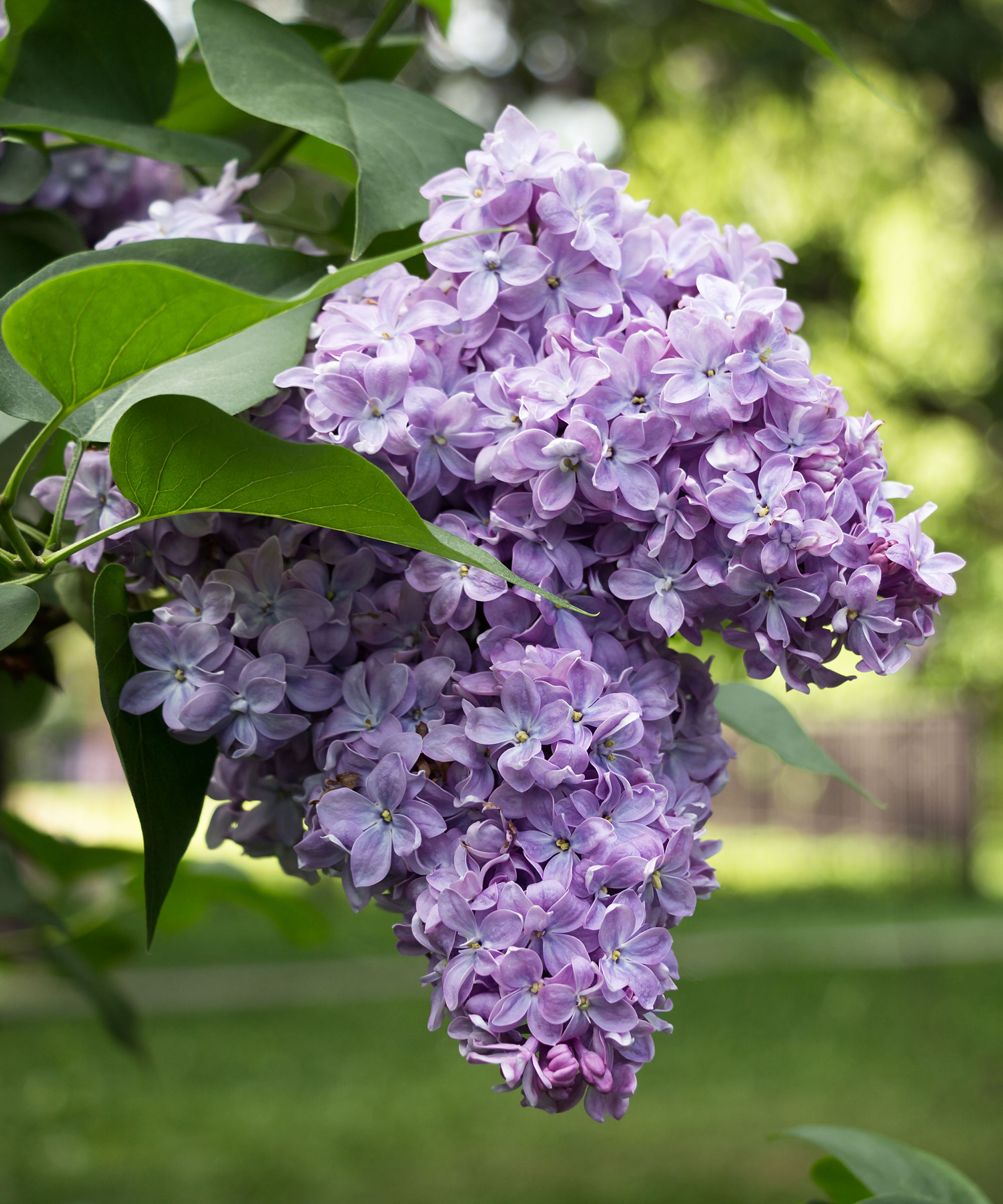
Lilacs bloom in spring and are pruned annually after flowering
How to grow lilacs from cuttings
If you are looking to learn how to take plant cuttings, there are a few key areas in which you must get the task right. That includes taking the cuttings at the right time and making sure to take the cutting from the right part of the plant, such as below a leaf node where the hormones are more concentrated.
Design expertise in your inbox – from inspiring decorating ideas and beautiful celebrity homes to practical gardening advice and shopping round-ups.
You also need to use the right compost and avoid using blunt tools. Always clean and sharpen pruning shears as blunt tools can damage the plant material when you are taking a cutting and also increase the risk of disease. A sharpening tool such as the Felco Sharpening Tool available at Amazon is ideal for keeping pruning shears sharp and ready for taking cuttings. Best practice is to clean your garden tools before and after use.
Tony O’Neill, author and owner of Simplify Gardening, claims that cuttings are an effective way of propagating lilacs and, by following some simple steps, any gardener ‘can successfully propagate lilacs from cuttings and enjoy their beautiful blooms and fragrance for years to come’.
He outlines eight key steps to follow to successfully propagate a lilac from cuttings.
- Choose the right time: The best time to take lilac cuttings is during the summer when the plant's growth is most active. Aim for early morning, when the plant is fully hydrated.
- Select healthy stems: Cut 4-6 inches of softwood stem, which is a new growth that is slightly matured and not too tender. Look for stems with healthy leaves and no signs of disease or pests
- Prepare the cuttings: Remove the leaves from the lower half of the cutting, leaving only 2-3 sets of leaves at the top. Make a clean cut at a 45-degree angle just below a leaf node.
- Rooting hormone: Dip the cut end of the cutting in a rooting hormone, available at Amazon, encouraging root development and increasing the chances of successful propagation.
- Plant the cutting: Fill a container with a well-draining, sterile potting mix. Insert the cutting about two inches deep into the mix, ensuring the lower leaf nodes are covered. Gently firm the soil around the cutting.
- Create a humid environment: Cover the container with a plastic bag or a plastic dome to maintain high humidity levels. This is essential for the cutting to develop roots. You can get nursery pots with humidity domes at Amazon that are ideal for propagation.
- Provide indirect light: Place the container in a location with bright, indirect light, and keep the soil consistently moist but not soggy. Avoid direct sunlight, which can cause the cutting to dry out and fail to root.
- Monitor the progress: It can take anywhere from 4 to 6 weeks for the lilac cuttings to root. Gently tug on the cutting after this time; if you feel resistance, it indicates that roots have formed.
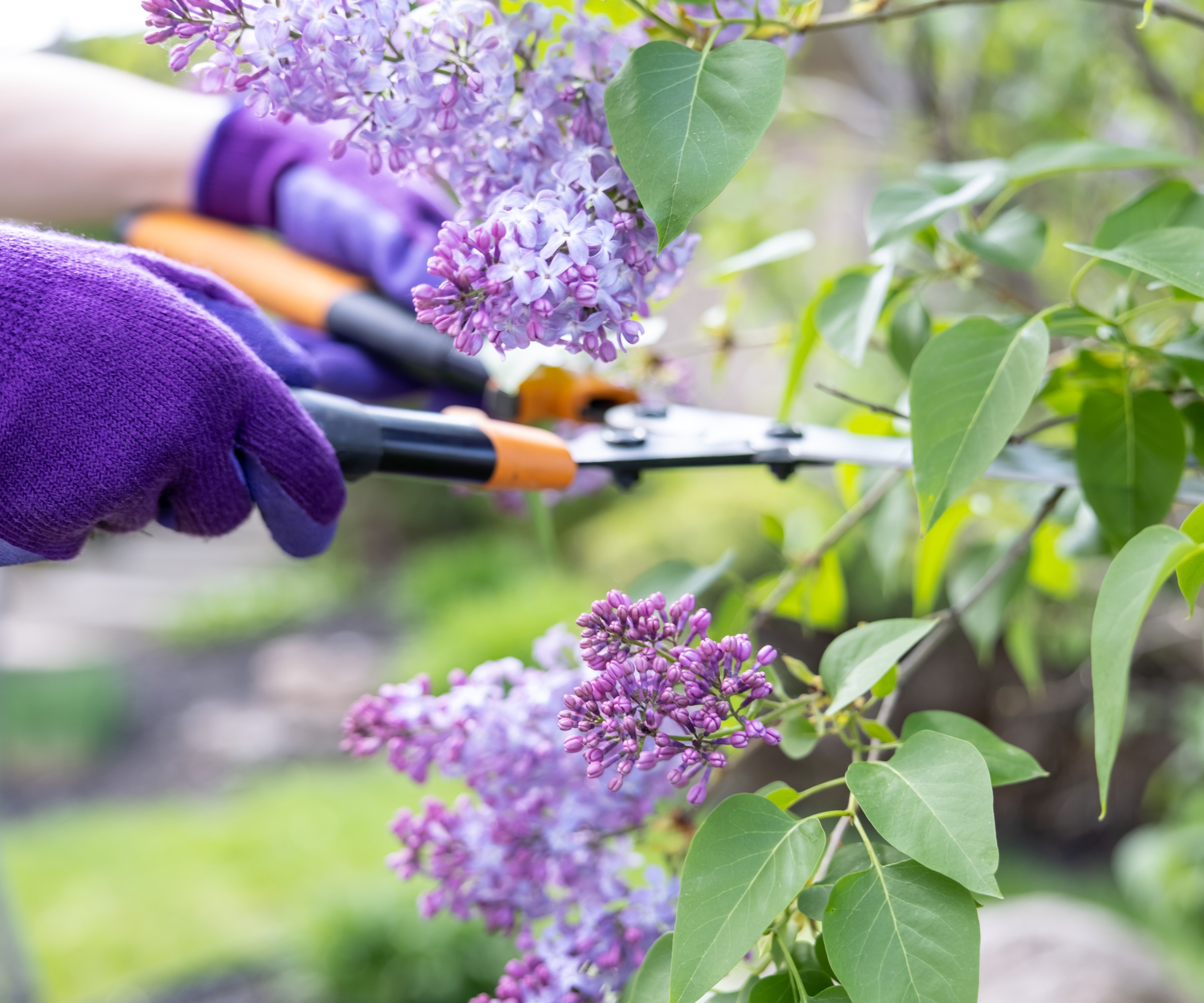
You are looking for softwood stems when taking cuttings
Patience is going to be key for success in growing lilacs from cuttings, as it can take several weeks for that cutting to root. During that time, it pays to monitor it carefully and take care when watering the young plants, as you want to keep the potting mix moist, but not soggy as that can leave the cutting at risk of rotting.
Once you are confident that the cutting has rooted, then you can transplant it either out into the backyard or into a larger pot to grow on or form part of a container garden. Plant the cutting in a full sun or partial shade spot in well-drained and slightly alkaline soil. Water the plant well after transplanting and keep it moist to help the cutting put down its roots.
Tammy Sons from TN Nursery in Nashville warns, however, that lilacs grown from cuttings should not be transplanted during their active growing season as that can potentially put the plant’s health at risk. She advises: ‘Plants suffer shock and this lessens the success rate by as much as 70-80 per cent. Wait until late fall.’ By planting in the fall, it gives the plant a good chance to grow strong roots and also reduces the watering requirements compared to planting during the summer.

Tony O'Neill is a passionate gardener and the author of Composting Masterclass, available at Amazon, and Your First Vegetable Garden. He runs the website Simplify Gardening along with a successful YouTube channel to educate people on various gardening topics.
How to grow lilacs from suckers
Lilacs send out suckers through their roots and you will commonly see the plants sending up new suckers each year around the base of its trunk. Most people just cut the suckers off, however, they can be used successfully to propagate new plants using only a few garden tools.
This is a task best done in spring and is a fairly simple process. You need to dig up the suckers, taking them complete with some of their roots attached. A sharp spade will be essential for the task, again making sure that the tool is clean. The root will need to be cut to separate the sucker and you could use a knife if the spade doesn’t manage it.
Place the disattached sucker in a bucket of water to keep it hydrated. The sucker can then either be planted elsewhere in the backyard or potted up in a large container filled with well-draining compost. Water it well after planting to encourage the plant to start putting out new roots and bed in.
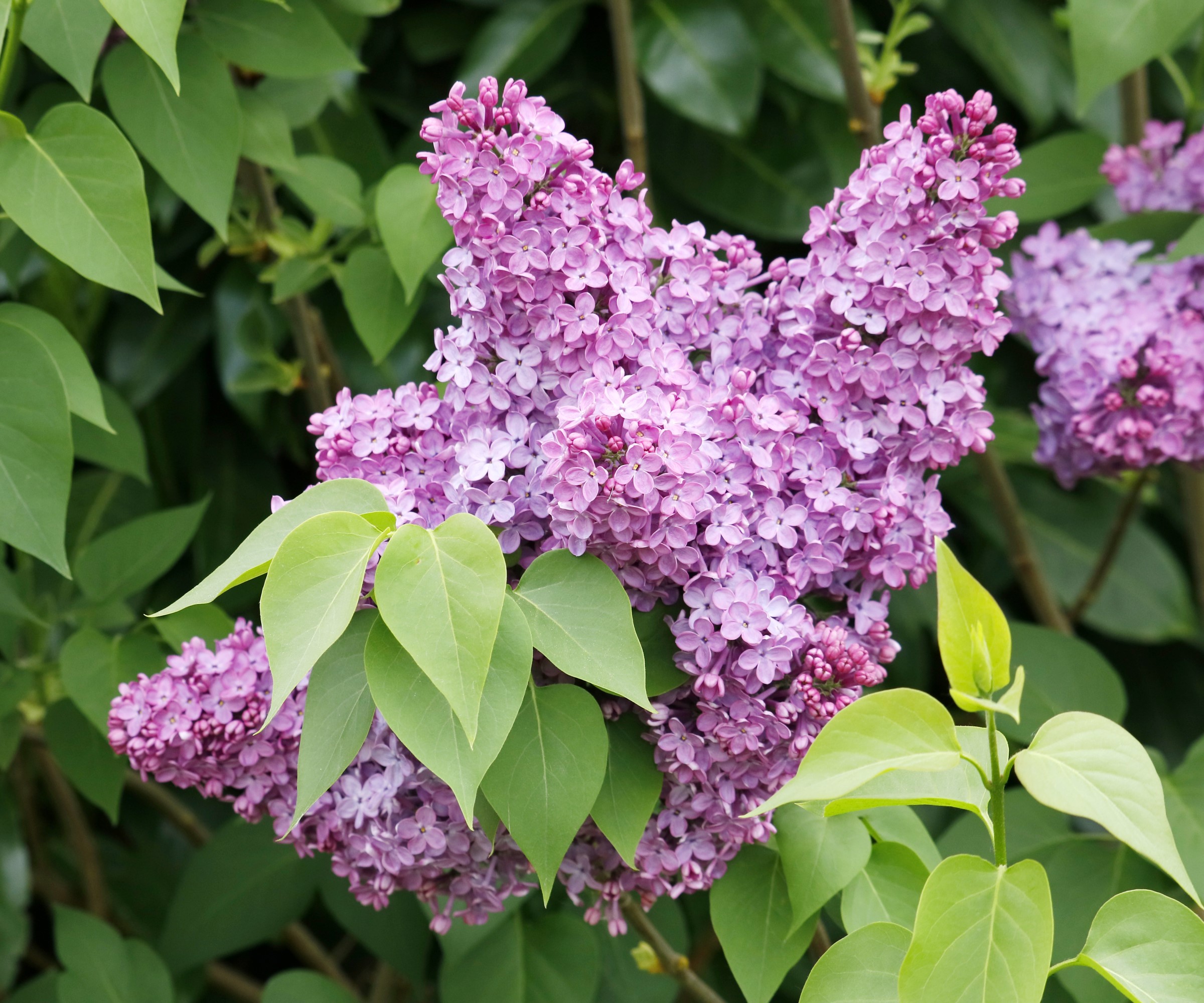
Lilacs are clump-forming plants that expand – and these sucker shoots are great for propagation
How to grow lilacs from seed
Lilacs can be grown from seed, and it is best to only propagate seed from non-hybrid varieties so you can guarantee what plant you will get. Seeds from the popular hybrid types will not come true and replicate the parent plant. It should be noted that lilacs from seed take many years to bloom – usually around four or five years.
To germinate the seeds, they need soaking for 24 hours as they are very hard and then must have a period of cold stratification. Store them in a refrigerator for two months in moist compost before sowing in a tray of seed compost and keeping somewhere warm. Ideally they want temperatures of 70˚F, so a heated propagator or heat mat may be required. An example of a heated propagation mat is the VIVOSUN professional heat mat available at Amazon that provides a warm environment to help with germination.
The lilac seeds should germinate in around a month. The seedlings then need to be kept somewhere protected to grow on before being planted out in the yard or in a pot after the last frosts for your US hardiness zone.
Knowing how to propagate lilacs arms you with the know-how to grow new plants for your backyard. Using cuttings or suckers to propagate new plants does offer a simpler and quicker method than trying to grow lilacs from seed.
Lilacs are beautiful and valuable additions to any backyard ideas and, by following our simple guide to propagating new plants, you can enjoy a bumper amount of blooms each spring. For more lilac care and growing advice, see our guide on how to fertilize lilacs, to keep your shrubs thriving.

Drew has worked as a writer since 2008 and was also a professional gardener for many years. As a trained horticulturist, he worked in prestigious historic gardens, including Hanbury Hall and the world-famous Hidcote Manor Garden. He also spent time as a specialist kitchen gardener at Soho Farmhouse and Netherby Hall, where he grew vegetables, fruit, herbs, and cut flowers for restaurants. Drew has written for numerous print and online publications and is an allotment holder and garden blogger. He is shortlisted for the Digital Gardening Writer of the Year at the 2025 Garden Media Guild Awards.